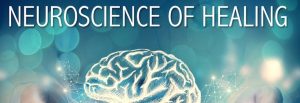Did you know about the E-spot?
E is for Empathy. The science behind the significance and function of this spot is fascinating.
When we reach out to comfort a friend, our instinct is to touch the upper arm near the shoulder and maybe give a little downwards stroke. This touch conveys empathy and support.
Recent research shows that this form of touch is hard-wired into our nervous system to affect the emotional systems in our brain – it’s referred to as ‘affective touch’.
Our skin contains specialised receptors and nerves that transmit different kinds of sensation – light touch, pressure, itch, hot and cold sensations, and pain signals. The new research shows that we all have specialised receptors and nerves in the skin that respond only to a soothing stroke or massage, which signal pleasure and comfort. These nerves respond most to a stroke that moves about 3 to 5cm per second and is temperature neutral – neither hot or cold. So when we are stroked by a hand in a soothing way – not too hard or fast – we get the maximum positive signal into the emotional circuits of our brain.
This biological function is seen in all mammals, it’s part of the essential bonding and attachment necessary for healthy brain development. So both humans and animals comfort their young with stroking and licking.
None of this seems surprising but the story gets much more intriguing when we consider recent developments in a novel form of psycho-sensory therapy called Havening Techniques®. This is a powerful new therapy for emotional trauma, anxiety, PTSD and phobias, based on a detailed neuroscientific understanding of how trauma gets encoded in the brain, and how it can be rapidly and permanently erased. Havening Touch involves soothing stroking to the upper arm – on the E-spot – and this causes a brain reaction that can cure trauma.
When we have a traumatic experience, new nerve connections are made in a part of the brain called the Amygdala. It’s like we create a multimedia web page of the traumatic event – all the sights, sounds, smells, emotions and body reactions get encoded in a form that can be rapidly triggered again. So, for example, one of my clients was involved in a serious car crash. Ten years later, she is still fearful when driving and she startles with sudden noises. The traumatic memory of the car crash is being triggered by sensory information – such as the experience of being in a moving car.
The developer of Havening Touch, Dr Ronald Ruden, has spent many years elucidating the molecular mechanisms of traumatic encoding, and how it can be cured. His breakthrough discovery was that trauma can be cured when the brain generates high levels of Delta Waves, a low frequency brain wave typically only seen during deep sleep. If a traumatic memory is activated and then Delta Waves are generated, the nerve connections that encode the trauma are deleted.
We now know the precise molecular mechanism for these changes, including the removal of receptors from the nerve membrane. In clinical practice we see the miraculous effects of this reaction when a traumatic memory and a phobia can sometimes be completely cured in five to ten minutes.
One of the most effective ways to generate high levels of Delta Waves is to stroke the upper arm – the E-spot – in a soothing way. The direction of the stroke matters for therapeutic effect, it’s always a downward stroke. Stroking of the head and face is also effective in creating Delta Waves.

I investigated this phenomenon by purchasing a neuro-feedback monitor called FocusBand. This device measures brainwaves from electrodes on your forehead and displays the signals on an app on your iPhone. As a doctor, I was completely astonished to see a dramatic increase in the amplitude of Delta Waves within twenty seconds of beginning the Havening touch to my face and upper arms.
Delta Waves turn out to be a pretty interesting phenomenon when you consider their significance in developmental and healing functions. Deep sleep – also known as ‘slow wave sleep’ – is the only time, as adults, that we normally have high levels of Delta Waves. Deep sleep has functions of replenishment, restoration and healing.
Babies and small children have a predominance of Delta Waves in their brains and, as our brains develop, we shift to higher frequencies. The early years of life are when we form our core beliefs and also our attachment style. Thus a loving upbringing gives us a secure attachment style and we have ease and confidence in our relationships. But if we don’t receive enough touch, comfort and love in our early years, we can develop an avoidant attachment style and have great difficulty in relationships.
Curiously, the Delta Waves we have during deep sleep also seem to play a part in process and consolidating the memories and meanings of our everyday life. If deep sleep is disrupted, our learning is impaired.
So here we have a fascinating series of connections to the E-spot: empathy, bonding, emotional support, relief of anxiety and trauma, and the generation of our core beliefs that we are worthy and loved. Maybe the E-spot is more important than the G-spot in human survival?
Next time you reach out to comfort a friend, just think about the power of your touch.
The author, Dr Robin Youngson, is a Certified Havening Techniques® Practitioner.

